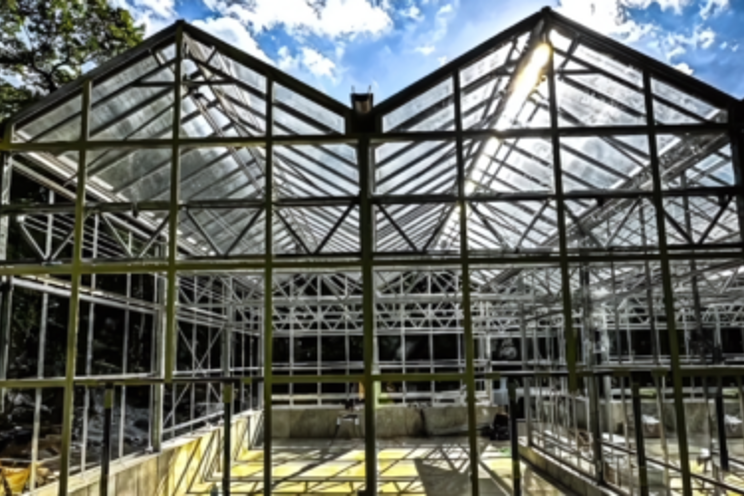Southern Highlands Reserve: Cultivating red spruce forests
Added on 28 August 2024

With the construction of an innovative greenhouse, Southern Highlands Reserve will begin a new era of conservation and revitalization. LLK Greenhouse Solutions is proud to partner with such an inspiring organization as they spread education and awareness. With a shared goal of improving the earth, we are excited to help make this creative, interactive, and sustainable greenhouse a reality.
What Is Southern Highlands Reserve?
Shrouded in the majestic Blue Ridge Mountains of North Carolina sits a small but mighty team of conservationists. Southern Highlands Reserve (SHR), a nonprofit native plant arboretum and a founding partner of the Southern Appalachian Spruce Restoration Initiative (SASRI), has worked tirelessly to preserve surrounding high-elevation forests through research, native-plant cultivation, and partnerships with local and federal organizations. The SHR 22-acre native plant garden, at an elevation of 4,500 feet, showcases the unique biodiversity of Western North Carolina. Through thoughtful design, their garden elicits an emotional connection to nature in those who visit.
Why Red Spruce Trees?
The high elevations of the Blue Ridge Mountains are a critical hub for numerous species. Centuries of timber harvesting, wildfires, climate change, and industrial development have eaten away at this natural habitat, robbing the ecosystem of valuable resources.
Red spruce trees can serve many manufacturing purposes, and loggers flocked in droves to the great spruce-fir forests to collect on this goldmine in the early 1900s. Fires quickly followed due to the surplus of resulting debris. In the 1970s and 1980s, acid rain from fossil fuel pollution led to further decline. Sadly, these factors greatly reduced the red spruce population, and the forest has not recovered.
As the forests dwindled, so did the biodiversity harbored within. The federally endangered Carolina northern flying squirrel and spruce-fir moss spider, the world’s smallest tarantula, make their home in the sanctuary of these environments. Northern saw-whet owls, brown creepers, black-capped chickadees, and several salamanders also depend on these specific conditions. In addition, the U.S. Forest Service has identified 16 different plant species that only grow in these forests.
Southern Highlands Reserve has already started the hard work of restoring these precious forests. More than 6,000 of their trees are already thriving on public lands in North Carolina, Tennessee, and Virginia. Staff members have dedicated countless hours to securing funds, finding partners, and collaborating with environmental experts to make this project possible. In 2003, partners and volunteers planted 1000 SHR red spruce trees at Whitetop Mountain in Virginia and 327 red spruce trees at North Carolina’s Mount Mitchell State Park. And there is more to come, with big plans on the horizon.
Building a Greenhouse to Cultivate a Forest
The U.S. Forest Service has commissioned SHR to grow 50,000 red spruce trees destined for spruce-fir forests across the Blue Ridge Mountains. With just two small hoop houses, SHR didn’t have the capacity to meet that number. Thus began plans for an innovative and sustainable greenhouse suited to match the work ahead. The new greenhouse will be the heart of forest conservation work in the Southern Appalachian region.
More news















